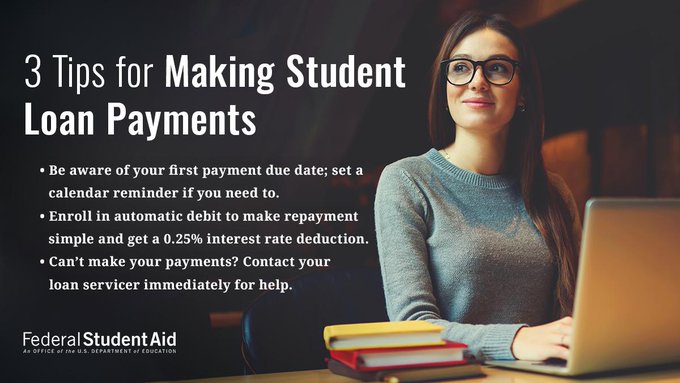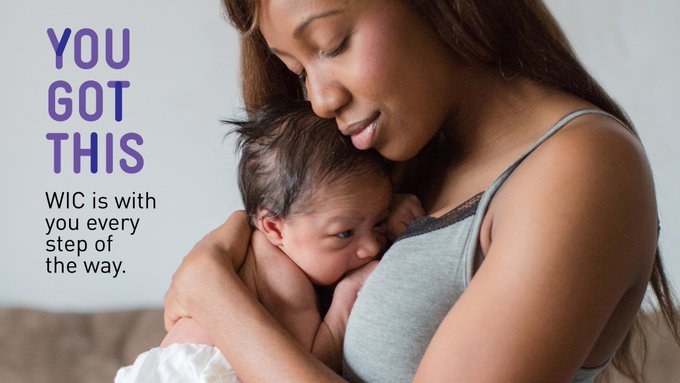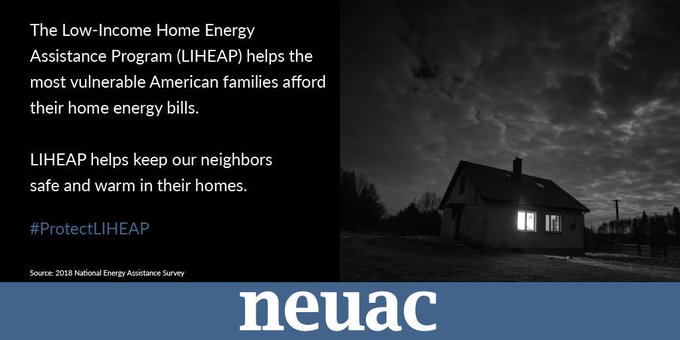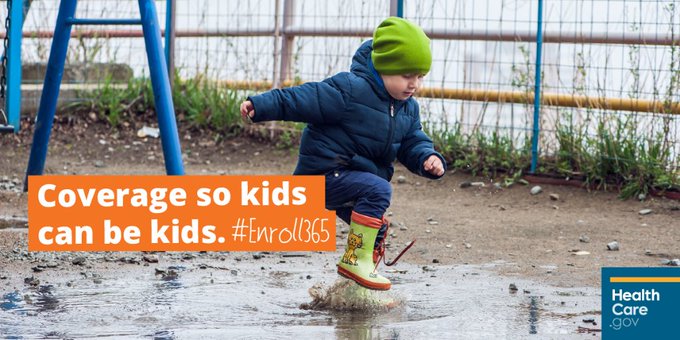25 Programs to Get Free Money from the Government
- Get link
- X
- Other Apps
How to Get Free Government Assistance
Jana LynchUPDATED FEBRUARY 20TH, 2020
If you’re facing a job loss, disability, underemployment, or other factors that make it difficult to support your family, you’re not alone.
According to U.S. Census data, 38.1 million people were living in poverty in 2018.
That doesn’t include the families living above the poverty line who struggle to pay their bills and put food on the table. That means a significant number of Americans rely on public assistance programs and free money from the government to get by.
But how do they find that money and those programs?
While the federal government provides a comprehensive list of programs, the following is a list of some common services and programs that provide free money and other resources.
How to Get Free Money from the Government
The federal government funds several programs to help U.S. citizens with basic necessities. Most of the programs and services are income-based and have other eligibility requirements, but others are available to anyone, regardless of income.
If you need financial assistance, these programs can help.
Government Assistance for Housing
Finding affordable housing is often difficult, especially if you live in a high cost of living area. These government-run housing programs can help keep you in your home.
Down Payment Assistance Programs
If you’re interested in buying a home, but need help with the down payment, there are a number of FHA grants available. Be sure to check the eligibility requirements for each grant, as they vary from program to program and state to state.
You might also be able to get assistance from a VA loan (guaranteed by the U.S. Department of Veterans Affairs) or USDA loan (offered by the U.S. Department of Agriculture) as well.
Affordable Housing
There are a number of government programs that help with paying rent, as well as a number of private charities and organizations. To qualify for HUD assistance, you must meet income eligibility requirements as well as guidelines for family size and composition. The type and amount of assistance varies from state to state.
HUD is offering $112M in grants available to expand #affordablehousing for low-income persons with disabilities. AND, for the first time in nearly a decade, new grants to build more! https://www.hud.gov/press/press_releases_media_advisories/HUD_No_19_152 …
55 people are talking about this
The three main programs supported by HUD are:
- Privately-owned subsidized housing
- Public Housing
- Housing Choice Vouchers (formerly known as Section 8)
You can find out if you qualify for one of these programs by contacting your local housing authority. Please note that in most areas, the Section 8 waiting list is incredibly long and in some cities, the list is closed to new applicants.
Foreclosure Prevention
If you’re struggling to pay your mortgage, The Homeownership Preservation Foundation is a HUD-approved free hotline you can call for help with making your mortgage payment and remaining in your home.
When you call, the hotline will connect you with a foreclosure prevention specialist who will talk with you about your options. You can also use the service if you’ve received a mortgage modification or have been a victim of a mortgage scam.
Education Assistance, Grants, and Loans
If you have student loan debt, or are looking for grants or loans to afford college, there are a number of options for you.
Student Loan Forgiveness
Under the Public Student Loan Forgiveness program, you’ll need to make 120 payments (10 years worth) and work full-time in an approved field, government agency, or nonprofit organization. If you meet all of the eligibility requirements and go through the lengthy application process, you might have the remaining balance of your student loans forgiven.
There are job-specific forgiveness programs for people in the medical and education fields, and some states have their own specific forgiveness programs.
Not ready to make your first student loan payment? These tips may help: http://bit.ly/2XetvBp
22 people are talking about this
There are also organizations you can work with that will forgive some of your federal student loans (private loans are not included), and provide a stipend for future educational expenses.
Some of these organizations include:
- AmeriCorps
- Peace Corps
- National Health Service Corps
- Nurse Corps
- Veterinary Medicine Loan Repayment Program
- Military Financial Aid
Pell Grants
If you are an income-eligible first-time undergraduate student or are enrolled in certain post-baccalaureate programs, you can apply for Pell Grants from the federal government. This is true free money, since it’s awarded as a grant rather than a loan and doesn’t have to be repaid, except under certain circumstances.
To be eligible for a Pell Grant, you must first complete a FAFSA (Free Application for Federal Student Aid) form. In fact, if you’re interested in receiving any need-based assistance including work-study, you must complete this form.
Food Assistance Programs
If your family is struggling with access to food, and you don’t have nearby food banks or food pantries, these programs and services can help.
SNAP
The Supplemental Nutrition Assistance Program, commonly known as food stamps, is the largest program offering free government money for food. Individuals and families meeting the income eligibility requirements receive a pre-loaded debit card that they can use at any grocery store, farmers market, or other retailer that accepts SNAP benefits.
Each state uses its own eligibility criteria for determining the amount of SNAP benefits a family or individual will receive.
WIC
Women, Infants, and Children is another food assistance program for low-income individuals. A bit more restrictive than SNAP, WIC provides food, nutritional education, and health care referrals to pregnant women, breastfeeding mothers, and low-income women with children five years old and under.
The #WIC program is here for you! WIC gives parents and caregivers information, tools, and support to be the parents they want to be. #MomStrong
See National WIC Assoc.'s other Tweets
In order to receive WIC benefits, you must meet certain eligibility requirements.
School-Based Programs
These are some of the food assistance programs are available to school-aged children.
Free and Reduced Lunch (and Breakfast)
Low-income families with school-aged children attending public school or a nonprofit private school or are in a residential childcare institution are eligible to receive free or reduced school lunches as well as free milk.
To participate in this program, as well as the free breakfast program, families must meet income requirements.
Summer Food Aid
Another government assistance program, the Summer Food Service Program provides free, healthy meals to children in low-income areas during the summer months. Since the meals are served by independent contractors and providers rather than the schools, you’ll need to find where they’re located in your area.
Backpack Program
While this isn’t a government-funded program, it is a way to get food on the weekends. Generally available in low-income areas, backpack programs provide healthy, non-perishable and easy-to-prepare foods to kids to ensure that they have enough food when school isn’t in session.
There are no standard eligibility requirements to participate in this program, and each one is unique to the community and population it serves.
Government Assistance Programs for Utilities
One of the largest household expenses after food and housing is utilities. Keeping the lights on and heating and cooling your home can take up a huge portion of your monthly income. These programs can help offset those costs and help you save on energy bills.
Low Income Home Energy Assistance Program
A federally-funded program designed to help low-income families with energy costs, LIHEAP provides financial assistance for paying heating and cooling bills.
#LIHEAP helps the most vulnerable American families afford their home energy bills. We urge Congress to #ProtectLIHEAP and our communities. #LIHEAPaction
See National Grid US's other Tweets
It can also help with emergency or crisis issues, like having your heat shut off in the winter or weatherizing your home. It doesn’t provide assistance for water or sewer bills.
Weatherization Assistance Program
This is a program run by the U.S. Department of Energy that provides grants to help low-income households reduce their energy costs by improving the energy efficiency and safety of their homes. Families must meet eligibility requirements to receive this type of assistance.
You can read more about the program and eligibility requirements by visiting the Weatherization Assistance Program’s website.
Free Government Money for Healthcare Needs
Whether it’s just you or you have a spouse and dependent children, you need medical care. If you can’t afford your employer’s health insurance options, or you make below a certain income level, there are still ways to have your medical needs taken care of.
Healthcare Marketplace
If you don’t currently have health insurance, you can sign up for a plan through the federal government via The Healthcare Marketplace.
While there is no specific option for low-income families and individuals, if you make below a certain threshold, you’re eligible for a premium tax credit, which would make your medical insurance free.
The website offers a free income screening tool to determine if you’re eligible for the credit or for lower-premium plans. There are also cost-sharing reductions to help offset the costs of certain services.
Medicaid
Often confused with Medicare, Medicaid is a healthcare program intended to assist low-income, pregnant, medically needy, and disabled individuals under the age of 65 so they can receive quality medical care.
Unfortunately, there’s no uniform set of eligibility requirements for Medicaid. Even though it’s a federal program governed by federal oversight, each state is permitted to decide for itself which populations are covered and what the eligibility criteria are.
To participate in the Medicaid program, states must cover certain groups of people:
- Low-income families
- Eligible pregnant women
- Individuals receiving Supplemental Security Insurance (SSI)
In some states, other populations like children in foster care or adults needing home-based services are also eligible for Medicaid. You can learn more about the complete eligibility requirements for the Medicaid program by visiting the Medicaid website.
Millions of children & teens qualify for free or low-cost health & dental coverage through Medicaid & the Children's Health Insurance Program (CHIP). See if it’s the right fit for your little one: https://go.hc.gov/2WL4b5F #TuesdayThoughts
21 people are talking about this
CHIP
The Children’s Health Insurance Program is another option for low-income families to obtain healthcare for their children. It provides low-cost insurance to families that earn too much money to qualify for Medicaid, but can’t afford private insurance.
Unlike Medicaid, CHIP isn’t a free program. There is a small fee associated with enrolling your child in CHIP, but it’s usually no more than 5% of your total income (the amount varies by state).
However, most routine services don’t have an associated copay, and in some states, there is a pre-pay discount. This means if you pay your annual premium in full, you might get a three-month discount. So if you pay for nine months, you can get three free.
Like Medicaid, each state determines its own eligibility criteria, so you’ll need to check with your state to find out if you qualify.
Government Assistance for Childcare
Finding quality and reliable childcare is crucial to working parents. However, in many areas, the cost of daycare is unaffordable, and parents must choose between unreliable care or not working. Fortunately, there are government assistance programs that can help.
Child Care and Development Fund
The Child Care and Development Fund is administered by the states to provide subsidies in the form of vouchers or grants and contracts with providers to low-income families for childcare.
Like many of the other assistance programs, each state sets its own eligibility requirements. You can find out what your state’s requirements are by contacting your local fund administrator.
If your family does qualify, you’re allowed to pick the provider you want, as long as the provider meets state standards (and accepts the voucher or grant).
Head Start
Head Start is a school-readiness program for children from birth through five from low-income families. In addition to preparing kids for school, it also helps with whole-family well-being and health and development.
A3.2: In addition to income-eligible families, #HeadStart serves migrant seasonal communities, children experiencing homelessness, children in foster care, children in tribal communities, etc. #EarlyEdChat
See National Head Start Association's other Tweets
Head Start services are available to eligible families living below the federal poverty line, and are available in childcare centers, in-home daycares, and home-based services.
Foster children, children from homeless families, and children in families where other types of assistance (i.e. TANF, SSI or others) is provided are also eligible for Head Start.
Free Money from Taxes and Unclaimed Funds
Free government money doesn’t always come in the form of need-based programs. Some are available to anyone, regardless of income.
Unclaimed Money
While this isn’t necessarily free money, it is money that is owed to you for some reason by some entity. This money can include uncashed paychecks, apartment or utility deposits or safety deposit box contents.
There’s no one place to check for unclaimed money, and you might have it in multiple states so make sure you’re researching all the states you’ve ever lived in. If your employer is headquartered in a different state from where you work, check that state as well.
The best places to start looking for your unclaimed funds are:
- Unclaimed.org
- https://webapps.dol.gov/wow/
- https://insurance.va.gov/UnclaimedFunds
- https://www.treasuryhunt.gov/forms/sav1048.pdf
You might also have unclaimed money from old or forgotten tax refunds. To check for those, visit:
- https://www.irs.gov/refunds
- https://www.usa.gov/unclaimed-money#item-37072
- https://www.irs.gov/businesses/small-businesses-self-employed/state-government-websites
Old Pension Plans
In addition to unclaimed money or tax refunds, you might have money available to you in the form of old pension plans. If you or someone in your family worked for a company that provided a pension but hasn’t collected those benefits, you might still be eligible for that money.
You can find out if there’s money owed to you by visiting the Pension Benefits Guaranty Corporation and searching for your or your family member’s name.
Tax Credits and Deductions
An easy way to find free money is to adjust your tax withholding and deductions. If you haven’t done this recently, review the W-4 you submitted when you began your job. Figure out what you chose and then, using this list, make necessary and appropriate adjustments.
Some people are also eligible for free tax preparation via the Volunteer Income Tax Assistance program or the Tax Counseling for the Elderly Program. If you qualify, you’ll receive free tax preparation by IRS-certified volunteers.
Miscellaneous Government Assistance Programs
Whether you need assistance with your phone service, starting a business, or have suffered a job loss, there are programs that can help.
Lifeline Phone
Lifeline is a discount cell phone service administered by the FCC, and is available to low-income people in every U.S. state, territory, commonwealth, and on Tribal lands. The cost is $9.25 per month.
In order to use Lifeline, you must meet certain income eligibility requirements. This means your income should be at or below 135% of the federal poverty level. You may also be eligible if you participate in certain assistance programs including:
- Medicaid
- SSI
- SNAP
- Federal Public Housing Assistance
- Certain Tribal assistance programs
Lifeline provides both cell phone and landline service and works with broadband. However, you may only use the Lifeline program for one service; FCC rules prohibit more than one Lifeline service per household.
FCC takes big step in automating Lifeline eligibility verification. For more info, visit: https://go.usa.gov/xVEhA #ProtectingConsumers #Lifeline
See The FCC's other Tweets
If you find that you need help with your phone service but don’t qualify for Lifeline, there are other ways to get free or discounted cell phone service.
Small Business Loan
If you’re interested in having your own business but don’t have the start-up capital, a loan from the Small Business Administration can help.
These loans aren’t free government money, but they often come with a much lower interest rate than loans from a private lender. The SBA also offers grants for select scientific and non-scientific fields and nonprofits as well as providing low-interest loans to businesses affected by natural disasters.
You check for those grants and even apply for them from your phone by visiting Grants.gov.
Temporary Assistance for Needy Families
Temporary Assistance for Needy Families, or TANF, is commonly known as welfare. It’s the cash assistance program designed to help families with children when the family can’t provide the children’s basic needs.
Like Medicaid, this is a program financially supported by the federal government but administered by the states. As such, each state has its own discretion to decide eligibility requirements, time limits, and other factors affecting who receives the assistance, and how much assistance each family receives.
To determine if you’re eligible in your state, you can visit this website.
Senior Benefits
BenefitsCheckUp is a free service administered by the National Council on Aging to help senior citizens find benefits that might be available to them. The searchable database contains more than 2,500 federal, state, and private programs to help improve the lives of seniors in the areas of:
- Medication
- Housing and utilities
- Health care
- Transportation
- Food and nutrition
- Income assistance
- Taxes
You can also search for veterans’ benefits and senior citizen discounts. The benefits are local to your area, which means that if you need help in Mississippi, you won’t be shown programs that are only offered in New York.
Unemployment Benefits
One of the most stressful parts of losing your job is the loss of income. If you have been let go or downsized from your job, you might be eligible for unemployment benefits.
CareerOneStop, operated by the U.S. Department of Labor, is a hub for you to apply for your unemployment benefits online, and find out what else you might be eligible for. They even have resources to help you with your job search.
Getting Free Government Money Can Be Difficult
Although there are plenty of options for finding free government money, the only way to receive the money is by meeting eligibility requirements in most cases. For most programs, there’s no uniform set of requirements beyond the federal poverty guidelines, so it’s often difficult to figure out if you qualify.
Low-income families with children, disabled individuals, veterans, and the elderly typically have an easier time qualifying for benefits, but it’s not a guarantee. And if you qualify for some programs, you might not be eligible for others. It all depends on your state, the program, and other factors.
If you need any of these programs, contact your state’s Department of Health and Social Services. You can also use the screening tool available on Benefits.gov to see what programs you might qualify for. While it isn’t a determination of benefits, it’s a good place to start.
AUTHOR
A tireless advocate for financial abuse survivors, Jana spent over a decade working in the social services sector after obtaining her Master's in Urban Affairs and Public Policy from the University of Delaware. Since making the switch to freelance writing and editing Jana has worked with a number of high-profile websites including The Penny Hoarder, ChooseFI, Frugal Rules, The Dollar Stretcher, and more. She also works closely with The Plutus Foundation, where she served as the Director of Grants and Programs for four years.
TONYA CHAMBERLAIN
I’m a single mother going back to school. I do get SNAP and I talked to DHS and they said they would help with getting me Internet if I can get a computer first. So, I’m needing a computer…can you help me find what I’m looking for?
Hey Tonya,
There are actually several organizations that might be able to help you with this. Check out this article on how to get a free laptop.
LEAVE YOUR COMMENT
1,600
You May Also Like

12 Practical Ways to Get Free Internet Access At Home and in Public
Internet access is a must for most people today; there’s just no way around it. But internet isn’t cheap, and costs aren’t likely to go down anytime soon. Here are some ways to get free internet access and save your hard-earned money.
MEGAN ROBINSON 13 OCT
17+ Creative Ways to Make Extra Money
We've wracked our brains and scoured the internet to find the best ways for you to make extra money. Some are easy, some are hard, but they all put more money in your pocket.
Are you ready to start making more money?
See the money-making guide that 50,000 others have downloaded:
- Get link
- X
- Other Apps





















Magzter Coupon Code, Promo Code & Deals Available. Get Great Discounts on Digital Magazine Subscriptions. Magzter Gold Offers.
ReplyDeleteTo get Incredible deals, coupons, and offers visit Coupon2deal.com
Thanks for sharing a great post. We provide routerlogin technical support, If you have any query regarding the Nighthawk router, visit our site.
ReplyDeletenighthawk-app.com
nighthawk app not working
routerlogin.net